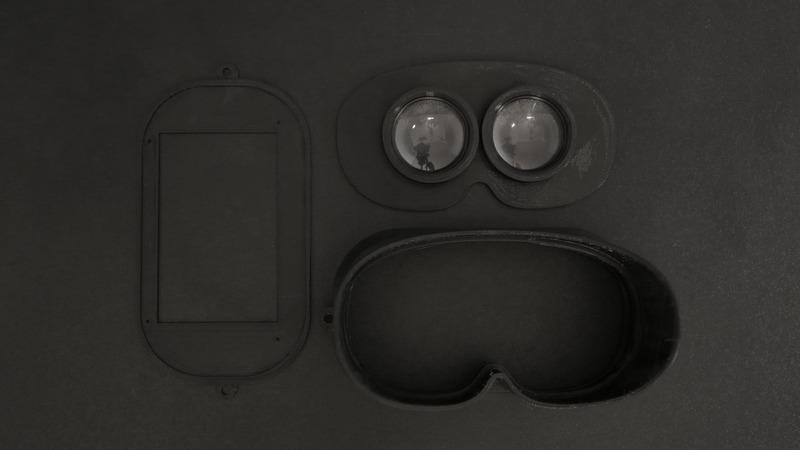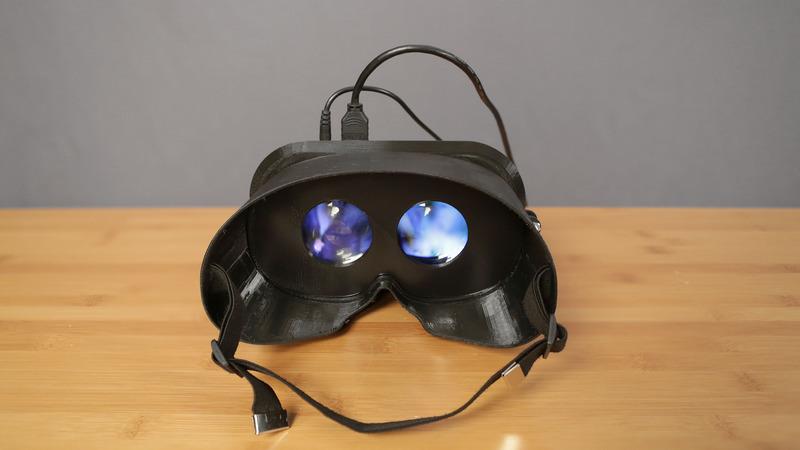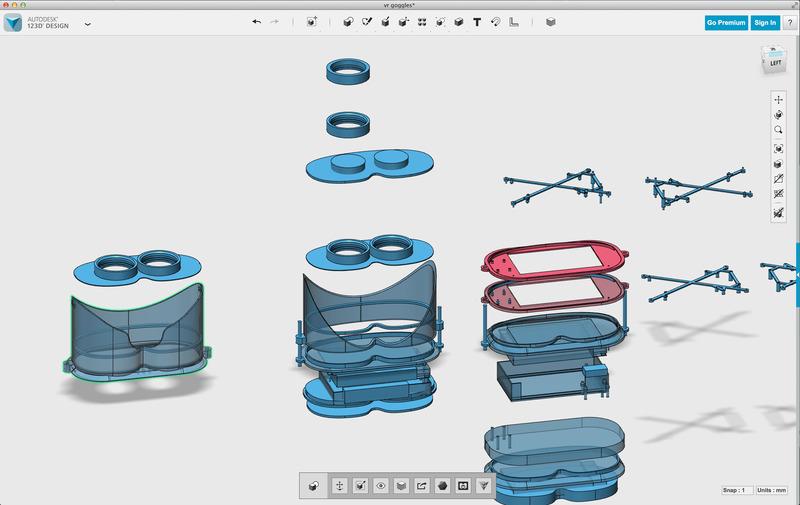Adafruit Industries Creates Customizable 3D Printed HD Video Goggles
 Video goggles and virtual reality headsets are becoming quite the hit as of late. Whether you are looking for your own personal display, perhaps because you are a videographer looking for an alternative to traditional HD monitors, or maybe because you are just a hardcore gamer that wants to experience 3D head-tracking games, this technology has many uses. Virtual reality is becoming almost scary with all the interesting applications and games that it can now be used for. One problem still remains, however, and that is the price of these devices. For example, an Oculus Rift Development Kit costs $350.
Video goggles and virtual reality headsets are becoming quite the hit as of late. Whether you are looking for your own personal display, perhaps because you are a videographer looking for an alternative to traditional HD monitors, or maybe because you are just a hardcore gamer that wants to experience 3D head-tracking games, this technology has many uses. Virtual reality is becoming almost scary with all the interesting applications and games that it can now be used for. One problem still remains, however, and that is the price of these devices. For example, an Oculus Rift Development Kit costs $350.
Adafruit Industries, has a solution though, with their 3D printable wearable video goggles, that look and operate just as good as anything else on the market today.
To create these goggles, Adafruit 3D printed a 4-piece enclosure using PLA and Ninjaflex filament, and fused these two material together in the process. This enclosure houses the electronics of the device, which include a 5″ HDMI diplay, a 9-DOF motion sensor, and an Arduino Micro. The design also requires an HDMI cable, for connection to a video source, and if you wish to make these goggles into a “do-it-yourself” Oculus Rift, it will require a pair of 50mm 5x Aspheric Lenses, which are mounted to the inner faceplate.
Prior to 3D printing the enclosure, you have ability to edit the design files in order to fit your face almost perfectly. Customization of the goggles, include the option of editing any of the parameters and adjusting each part of the goggles’ design to the size and shape of your head and face.
The approximate 3D printing time required is about 8.5 – 10 hours depending on your 3D printer and the speed at which you print. Once the printing is complete, it’s on to the mounting and assembly of the electronic components, which includes mounting the motion sensor with 4 screws, bending some wires, fastening the driver board to one of the 3D printed enclosure parts, and more. The process is laid out with very easy to understand, step-by-step instructions on the Adafruit website.
If you wish to add virtual reality functions to the goggles, you can download the software files on GitHub, and read the software setup guide from Ahmet YILDIRIM.
Adafruit has created a very useful PDF file with all the instructions needed to create these unique video goggles from scratch. While someone not familiar with 3D printing and electronics might have a bit of trouble, those who have assembled electronics in the past, should be able to fairly easily create these goggles on their own.
Have you created these? We’d love to see and hear how they turned out. Discuss in the 3D Printed Video Goggles forum thread on 3DPB.com. Check out the video below:
Subscribe to Our Email Newsletter
Stay up-to-date on all the latest news from the 3D printing industry and receive information and offers from third party vendors.
Print Services
You May Also Like
Velo3D Kicks Off New Strategy by Signing $15M Deal with Space Company
Velo3D (OTCMKTS: VLDX) just landed a five-year, $15 million deal with commercial space company Momentus (Nasdaq: MNTS). But this partnership is more than just a revenue boost; instead, it marks...
SWISSto12 to 3D Print Antennas for SES’s Medium Earth Orbit Satellite Constellation
SWISSto12 has made a remarkable journey in satellite manufacturing. The company now produces its own HummingSat, as well as 3D-printed filters, waveguides, and other RF components. Recently, it was selected...
Additive Industries Talks 3D Printing for RF Components, Automotive, & More
Dutch company Additive Industries, which first unveiled its flagship MetalFab industrial 3D printing system in 2015 and officially launched it in 2017, was very busy last year. At Formnext 2023,...
Could Axiom Space and India Disrupt the Global Space Market?
Axiom Space has set its sights on building the next space station to replace the International Space Station (ISS) and is currently in the early stages of developing its first...



























